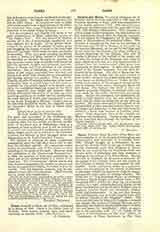

Canelos and Macas, Vicariate Apostolic of, in Ecuador, South America, separated in 1886 from the Vicariate Apostolic of Napo, until then administered by the Jesuits, and since February 3, 1893, one of the four missionary vicariates created by the concordat of Leo XIII with Ecuador (Battandier). This vicariate is now in charge of the Dominicans, who sent thither the first missionaries shortly after the Spanish conquest; it is not subject to Propaganda, but to the Congregation of Extraordinary Ecclesiastical Affairs. The vicariate is bounded on the west by the province of Chimborazo and the River Morona, on the south by the Amazon (Maranon), on the east by the Tigre, and on the north by the Curaray; the entire territory is divided lengthwise by the Pastaza. The city of Canelos is situated in the foothills of the Andes, not far from the sources of the Bobonaza, and takes its name (identical with that of a very ferocious tribe of Indians) from the cinnamon plant which grows very abundantly in these regions. It dates from the first period of the Spanish conquest, but was often destroyed by the savages. The city of Macas lies farther south on the Upano, and was once a center of great wealth, owing to the neighboring gold mines; it was known as Sevilla del Oro, or “Golden Seville”. Owing to the attacks of the savages it became necessary to abandon these mines, whereupon Mama fell into decay. The Indians who dwell in this vast vicariate are partly Christians (a remnant of the converts made by the earlier missionaries) and partly pagan. Robust and intelligent, but passionately devoted to their freedom, they are very widely scattered, and the tribes are frequently at war with one another. The missionaries gather the orphans of the Indians killed in these wars and instruct them in various trades and industries; in this way they have established a fairly large number of Christian settlements. Other important cities of the vicariate are Mendoza and Gualaquiza. Canelos is also the name of the river that flows through the territory of the Canelos Indians.
U. BENIGNI

